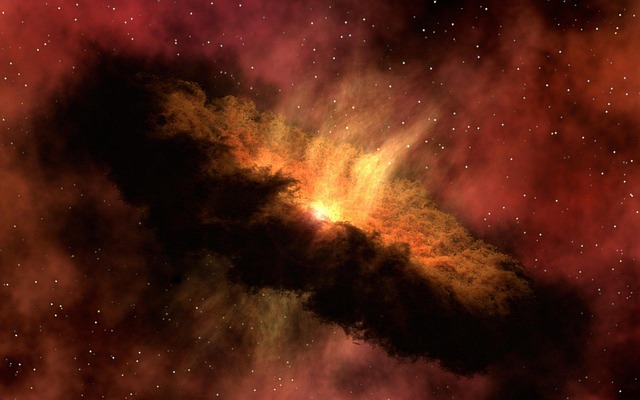For nearly a century, dark matter has confounded scientists. Although it is thought to outweigh normal matter by a factor of five, it cannot be observed, touched, or detected using any conventional methods. A new analysis of 15 years of observations from NASA’s Fermi Gamma-ray Space Telescope may, however, have offered a tantalising clue.
++ The peregrine falcon: nature’s fastest killer in the skyThe peregrine falcon: nat
Researchers have identified a faint, halo-shaped glow of gamma rays surrounding the Milky Way, with energies that closely resemble those predicted for a particular type of theoretical dark matter particle. These particles, known as weakly interacting massive particles (WIMPs), could emit gamma rays when they collide and annihilate one another.
Professor Tomonori Totani, an astronomer at the University of Tokyo and author of the study, said: “If this interpretation is correct, it would represent the first time humanity has effectively ‘seen’ dark matter.”
Speaking to BBC Science Focus, he added: “When I first noticed what looked like a signal, I was doubtful. But after checking the data thoroughly, once I felt confident, I had goosebumps.”
Despite the excitement, independent experts stress that the evidence is far from conclusive. The possible breakthrough comes nearly 100 years after Swiss astronomer Fritz Zwicky first proposed the existence of dark matter, having observed that galaxies in the Coma Cluster were moving far too quickly for their visible mass alone.
Totani’s research, published in the Journal of Cosmology and Astroparticle Physics, analysed Fermi data focusing on the regions above and below the galaxy’s central disc—areas known collectively as the galactic halo. After modelling and subtracting all known sources of gamma rays—including interstellar gas interactions, cosmic rays, and vast bubbles of high-energy plasma—Totani identified a leftover component that should not exist.
“We detected gamma rays with energies of around 20 gigaelectronvolts, forming a halo-like structure towards the centre of the Milky Way,” he explained. “The pattern of this emission closely matches that expected from the galaxy’s dark matter halo.”
The signal rises from a few GeV, peaks sharply at roughly 20 GeV, and then declines—mirroring predictions for WIMPs with masses around 500 times that of a proton.
Totani argues that the evidence strongly supports dark matter annihilation, calling the findings “a significant leap forward for astronomy and physics”. Yet Professor Jan Conrad, an astroparticle physicist at Stockholm University and an independent specialist in gamma-ray analyses, strikes a more cautious tone.
“It is extremely challenging to make such claims using Fermi data,” he told BBC Science Focus.
This is not the first instance of a mysterious gamma-ray excess. In 2009, shortly after the Fermi telescope was launched, astronomers detected unexplained gamma rays from the Milky Way’s centre—an anomaly that remains unresolved 16 years later.
“That signal was also attributed to dark matter,” Conrad noted. “But despite more data and improved methods, we still cannot confirm or dismiss that interpretation.” The newly identified halo signal poses similar difficulties. Gamma rays in this region may come from numerous astrophysical processes, many not yet fully understood—making it extremely hard to draw firm conclusions.
++ Power and finesse: the monkey that bites like a jaguar
“Because the backgrounds are so uncertain, it becomes very difficult to make strong statements,” Conrad said.
Both experts agree on the most promising next step: examining dwarf galaxies. These small, dim galaxies orbiting the Milky Way are believed to be rich in dark matter yet produce minimal gamma-ray interference.
Conrad said: “If you see the same type of excess in dwarf galaxies, that would be a persuasive indication. They are much cleaner environments.”
Totani echoed this view, saying a corresponding signal from dwarf galaxies would be entirely expected if dark matter is responsible. Another key test lies in underground dark matter experiments around the world. A direct detection of WIMPs with matching mass would provide exceptionally strong support.
In the coming years, the Cherenkov Telescope Array Observatory (CTAO) is set to enhance sensitivity to high-energy gamma rays dramatically, offering scientists a powerful tool to assess the new findings.
“Of course, if it’s genuine, it would be a remarkable discovery,” Conrad said. “We still don’t know what dark matter is. A definitive signal would be extraordinary. But we must thoroughly examine every other possible explanation for this excess.”





